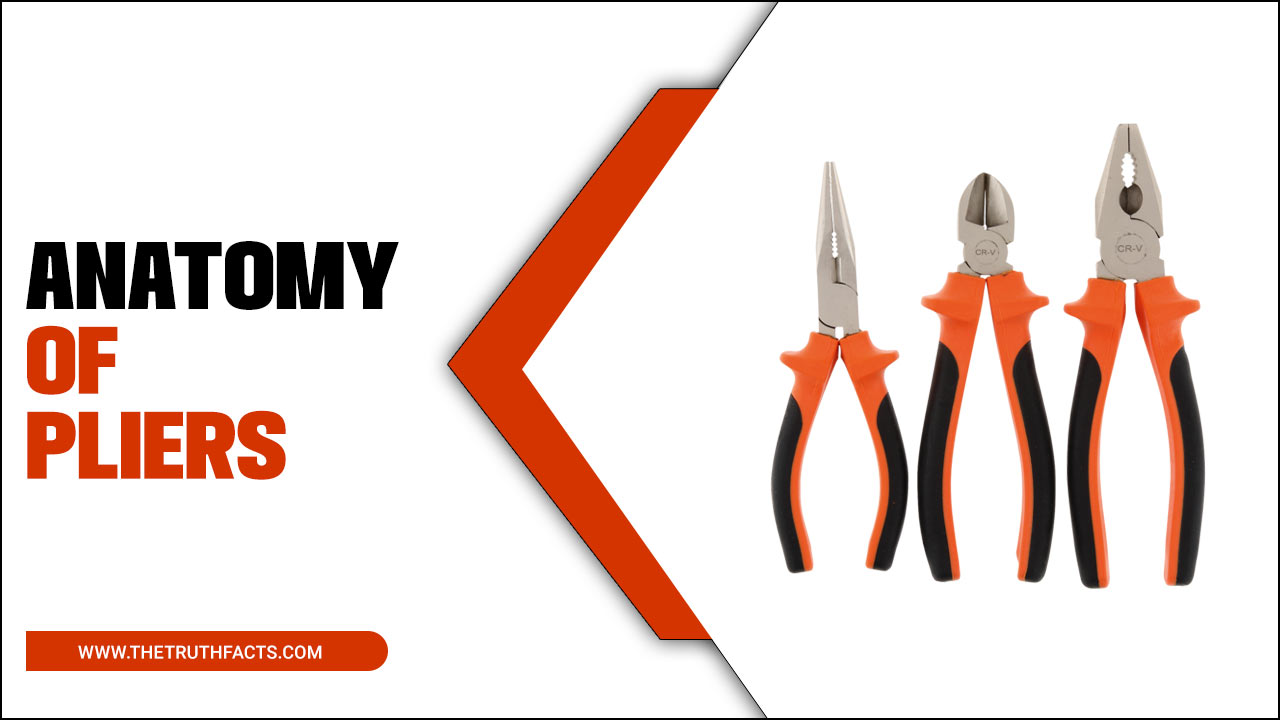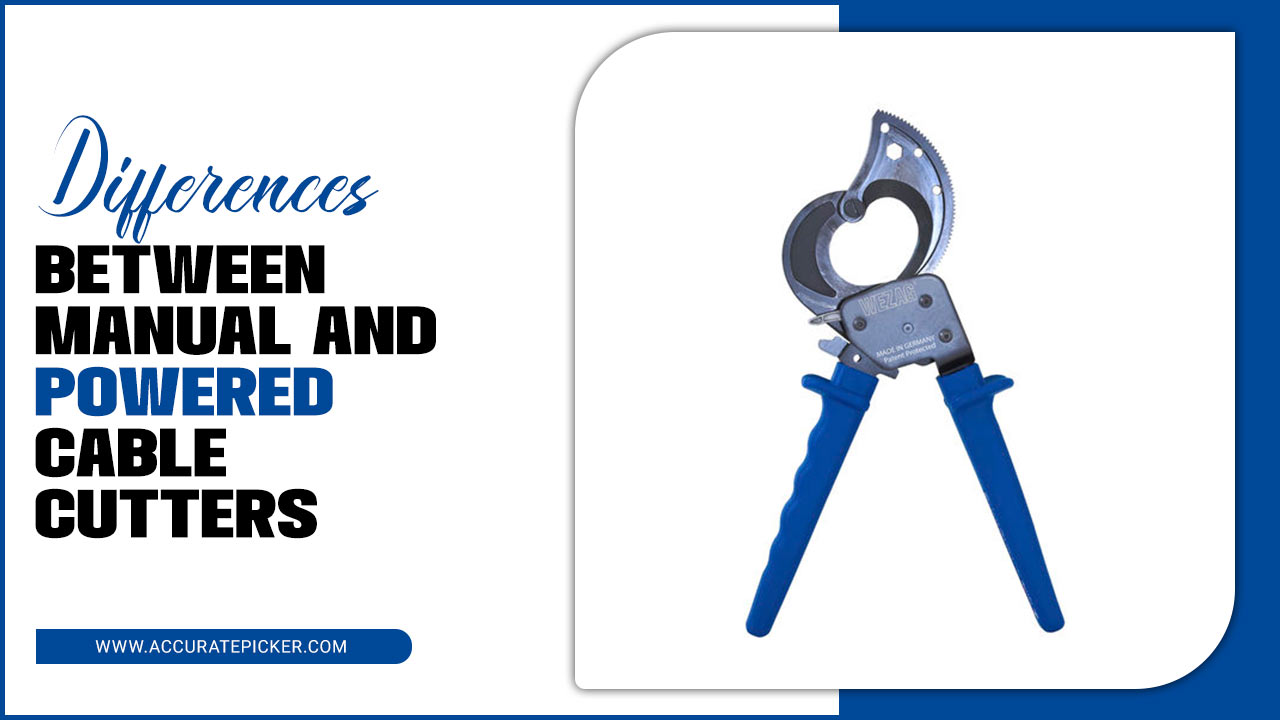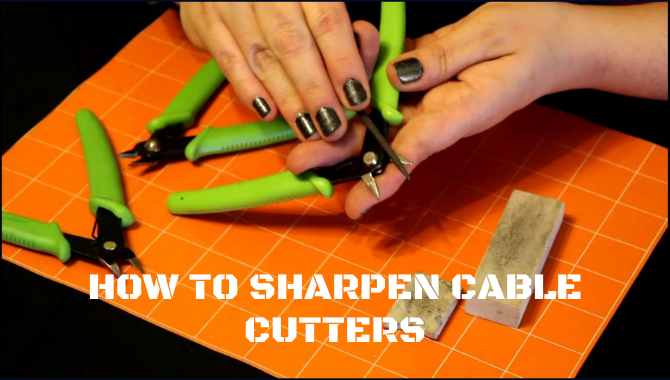The anatomy of pliers is an essential concept to understand for those who work with tools and machinery. Pliers are a versatile tool used for a variety of tasks, such as cutting, gripping, and bending.
To make the most of this tool, it is important to understand the various components that make up its anatomy. This article will discuss the anatomy of pliers, including the handle, joint, pivot, and jaws, as well as how each of these parts contributes to the overall function of the tool.
Additionally, the article will cover the various types of pliers available and how they can be used in various applications. With this knowledge, readers will be able to make informed decisions when selecting and using pliers. Get ready to delve into the anatomy of pliers and discover how this versatile tool can help you with your projects!

Anatomy Of Pliers: A Guide

Before delving into the main article, it is important to gain an understanding of the anatomy of pliers. Pliers are a type of hand tool used for gripping, cutting and bending objects. They consist of two metal arms connected at one end by a pivot joint, and a gripping mechanism at the other end.
Pliers are typically made from steel or other metals and are available in a variety of sizes and shapes. The anatomy of pliers includes the handle, the pivot joint, the gripping mechanism, and the arms. The handle is used to hold the pliers and can be made from plastic, rubber, or metal. The pivot joint is where the two arms are connected and allows the pliers to open and close.
The gripping mechanism is located at the end of the arms and can be either a flat jaw, round nose, or needle nose. Finally, the arms are the two metal parts of the pliers that extend from the pivot joint to the gripping mechanism. Understanding the anatomy of pliers is essential for using them safely and effectively.
Types Of Pliers

Pliers are a common tool found in many homes and workshops. They are used for a variety of tasks and come in a variety of shapes and sizes. The types of pliers available can be broadly classified into three categories: cutting pliers, gripping pliers, and combination pliers.
Cutting pliers are designed to cut through items such as wire, nails, and screws, while gripping pliers are used to hold items in place. Combination pliers combine the features of cutting and gripping pliers, making them ideal for a wide range of tasks.
Each type of pliers have their own unique design features, such as special teeth, cutting edges, and gripping jaws. When choosing the right type of pliers, it is important to consider the task they will be used for and the size and shape of the material that will be handled.
Slipjoint Pliers
Slipjoint pliers are a type of hand tool used for gripping and securing objects. They are characterized by the presence of two pivot points, allowing for the jaw to be opened and closed at a variety of angles.
Generally, slipjoint pliers feature a spring-loaded joint that works to keep the jaws in their default closed position. The jaws are serrated to provide a better grip and are adjustable to accommodate different sizes of objects.
They are commonly used in DIY projects, such as plumbing and carpentry, and are a useful tool for general maintenance. Slipjoint pliers are also known for their versatility and ease of use, making them an ideal choice for many applications.
Combination Pliers
Combination pliers are one of the most versatile tools used in a variety of applications, from carpentry to plumbing. They are designed to cut, pry, twist, and grip objects of different sizes and shapes. The head of the pliers is made up of two distinct parts: the gripping jaw and the cutting jaw. The gripping jaw is usually curved and has a serrated or toothed texture, which provides a secure grip on objects.
The cutting jaw is usually straight and comes with a beveled edge that allows for a cleaner cut. The handles of combination pliers are usually made of rubber or plastic for a better grip and more comfort.
Long Nose Pliers
Long Nose Pliers are a type of hand tool designed for gripping, cutting and bending wires. They have a long, narrow nose and a set of jaws at the tip. The jaws are angled, allowing for easy gripping of small objects. The handles are usually curved and padded for comfort and a better grip.
Long Nose Pliers are often used in electrical work, jewelry making, detailing of model cars and other hobbies. They are also used for cutting and bending wires, and for reaching into tight spaces.
The tool is designed to help you work easily and safely, as the handles provide a secure grip and the jaws are designed to prevent slipping. Their long nose allows for better access to difficult areas, making them perfect for intricate projects.
Needle Nose Pliers
Needle nose pliers are an essential tool in any toolbox. These pliers feature long, narrow jaws that come to a point at the end, allowing them to access tight spaces and grasp small objects. The jaws are typically serrated, allowing for a better grip on items. The handles of needle nose pliers are usually longer than regular pliers, providing better leverage, and typically have a cushion grip for comfort.
The jaws are typically able to open wide enough to grab larger items, but not so wide as to interfere with the ability to access tight spaces. Needle nose pliers are a versatile tool, and can be used for a variety of tasks such as bending wire, cutting small objects, and reaching into tight spaces.
Parts Of Pliers

Pliers are a versatile hand tool composed of two arms joined at a pivot point. Each arm consists of a flat gripping surface with a serrated outer edge, allowing for a secure grip on a variety of objects. The pivot point is usually a metal rivet, allowing the two arms to move independently or in unison.
Pliers often come with additional features such as a spring-loaded hinge, a cutting blade or wire-stripping notches. Knowing the parts of a pliers can help you determine the best tool for a job. The two arms of the pliers are the jaws, which are used for gripping objects. On the outside of the jaws are serrations, which help to increase the grip of the pliers.
The pivot point is the rivet that joins the two arms together. It allows the user to open and close the jaws with relative ease. The handle of the pliers is the portion the user holds onto while using the tool. It is usually the longest component and may have a textured grip for extra security.
Some pliers may also include a spring-loaded hinge, which helps to keep the jaws open after the user has released the handles. This can be very useful for jobs that require prolonged gripping.
Additionally, some pliers include a cutting blade or wire-stripping notches. This can be used for cutting wire or loosening bolts and nuts.
Handles
Handles are the most important part of a pair of pliers. They are the part that the user holds and controls the tool with. They are typically made of a comfortable and durable material such as plastic or rubber. Depending on the type of pliers, the handles may be ergonomically designed to provide the user with a better grip.
Most handles are designed with a loop on the end to allow for easy storage and transportation. Some pliers also have a textured handle, which helps to provide a better grip. Knowing the anatomy of a pair of pliers is important in order to properly use the tool and have a successful project.
Jaws
Jaws are the most essential component of pliers. They are used to grip onto objects and typically consist of two arms connected at a pivot point. Each arm has a flat, serrated or grooved surface with a slightly pointed end. The serrated or grooved surface helps provide increased traction when clamping onto objects.
Jaws also come in a variety of sizes to accommodate different materials and shapes. Additionally, some pliers have adjustable jaws, allowing you to change the size of the grip to fit whatever object you are working with. Jaws are also sometimes coated with a non-slip material, such as rubber or plastic, to help provide a secure grip when clamping onto objects.
Pivot Point
A pivot point is an essential component of the anatomy of pliers. It’s a connection point that allows the two handles to rotate around, allowing the user to adjust the distance between the tips of the pliers. The pivot point is typically a rivet, pin, or rod that passes through both handles.
It is often made from steel and coated with a lubricant to reduce friction when the pliers are in use. Depending on the type of pliers and the application, the pivot point may be designed for high strength or for low friction.
Some pliers even have adjustable pivot points, allowing users to change the tightness for more accurate movements. Understanding the different components of pliers and how they fit together is key to using them effectively and safely.
Adjustment Screw
An adjustment screw is an important part of any pair of pliers. It is typically located near the tip of the pliers, and allows the user to adjust the tension of the jaws. This is important because pliers are designed to grip objects securely, and without the ability to adjust the tension, the pliers would not be able to properly grip different objects.
The adjustment screw is usually a small, round screw that can be turned with a Phillips or flathead screwdriver. It is important to make sure the screw is not over-tightened, as this can cause the pliers to become difficult to open and close. Adjustment screws are an important part of pliers, and can make a big difference in their performance.
Conclusion
Pliers are an essential tool for a variety of tasks, from gripping and cutting to bending and twisting. Understanding the anatomy of pliers can help you use them safely and effectively. Pliers typically have two handles, a pivot point, an upper jaw, a lower jaw, and a cutting edge.
The handles provide the user with a comfortable grip, while the pivot point allows for precise control and manipulation. The upper and lower jaws are used for gripping and the cutting edge is used for cutting wire or other materials. Knowing how to use pliers properly can help ensure your safety and the successful completion of your project.
FAQ’s
1.What Are The Main Components Of Pliers?
Ans: The main components of pliers are the handles, the joint, the pivot and the head. The handles are used to provide grip and leverage when using the pliers. The joint holds the two handles together and the pivot allows the two handles to move freely. The head is the part of the pliers that contacts and applies pressure to the object being manipulated.
2.What Is The Purpose Of The Gripping Jaws On Pliers?
Ans: The purpose of the gripping jaws on pliers is to securely grip and hold items. They are designed with long, narrow, curved tips that can be used to grab and hold small objects and can be adjusted to fit different sizes and shapes. The jaws can also be used to cut or bend wires and other materials. Pliers are a versatile tool used in many industries and they are an essential part of any toolbox.
3.What Is The Difference Between Needle-Nose And Slip-Joint Pliers?
Ans: Needle-nose pliers have long, thin jaws and are good for getting into tight spaces, while slip-joint pliers have a joint that allows the jaw to open wider or narrower. Needle-nose pliers are less adjustable than slip-joint pliers, but they are more precise and can be used for more delicate tasks.
Slip-joint pliers are more versatile than needle-nose pliers and can be used for a variety of tasks, but they are less precise than needle-nose pliers and cannot access tight spaces.
4.How Do Pliers Help To Hold Objects In Place?
Ans: Pliers are a tool used to hold objects in place. They are designed with two metal arms that pivot in the middle with gripping jaws on the end. The gripping jaws are used to hold onto objects firmly and securely. Pliers can also be used to bend and twist objects into desired shapes and positions.
5.What Are The Most Common Types Of Pliers Used In The Home?
Ans: The most common types of pliers used in the home are needle nose pliers, slip joint pliers, diagonal cutting pliers, and lineman’s pliers. Needle nose pliers are used for working in tight places, slip joint pliers are great for gripping and turning, diagonal cutting pliers are great for cutting and stripping wire, and lineman’s pliers offer a strong grip for heavier projects.


![10 Best Needle Nose Pliers [Reviews With Buying Guide]](https://accuratepicker.com/wp-content/uploads/2022/03/Best-Needle-Nose-Pliers.jpg)


